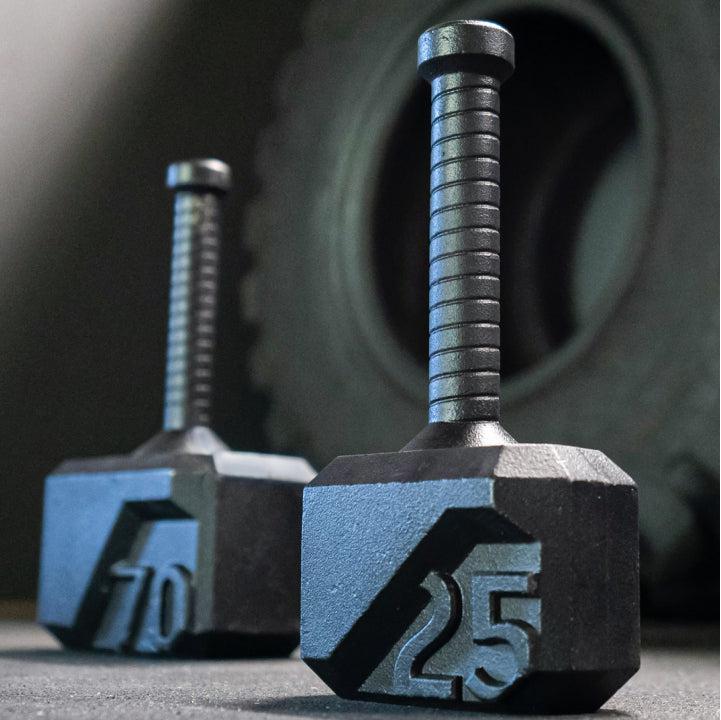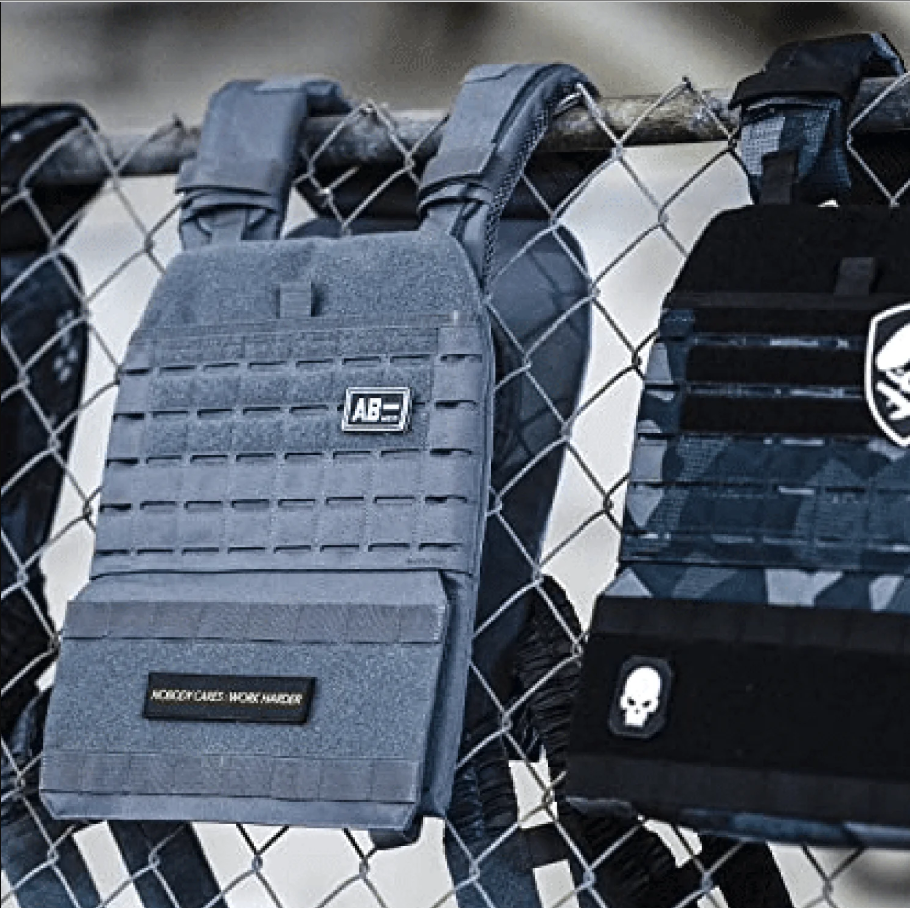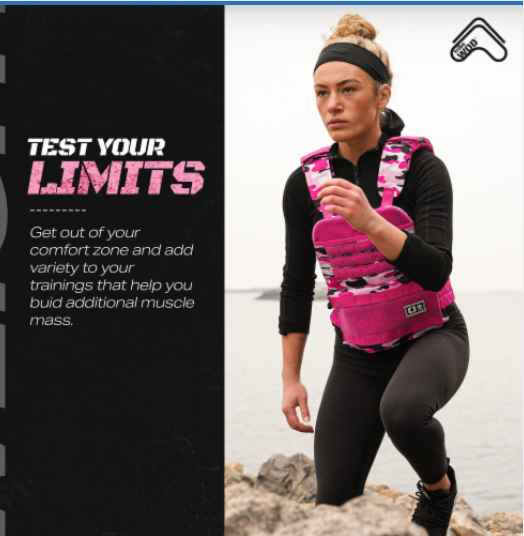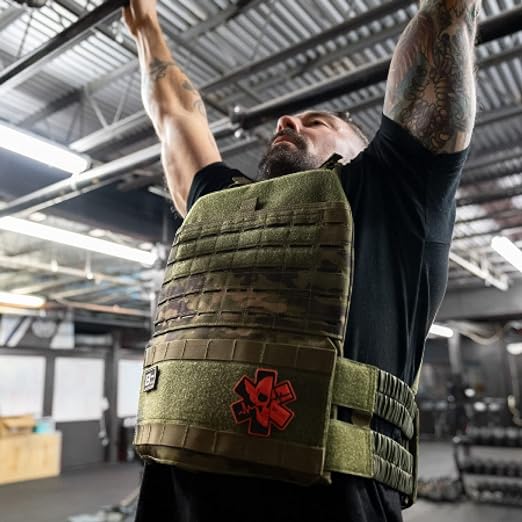If you're looking to take your lower body workout to the next level, incorporating weighted vest squats into your routine can provide a challenging and effective way to build strength, improve endurance, and enhance overall fitness. In this comprehensive guide, we'll explore the benefits of weighted vest squats, proper techniques for performing them safely and effectively, and various tips and tricks to help you maximise your workout with added resistance.
Topics Covered in the Article:
Introduction to weighted vests
- Weighted Vest Squats
- Benefits of Weighted Vest Squats
- How to do Weighted Vest Squats?
- Incorporating Weighted Vest Squats into Your Fitness Routine
- Common Mistakes to Avoid
- Safety Tips for Using Weighted Vests
- FAQs about Weighted Vest Squats
- Conclusion
Introduction to Weighted Vest
Weighted vests have become increasingly popular among fitness enthusiasts looking to elevate their workouts and achieve greater results. These vests, equipped with pockets to hold weight plates or sandbags, add resistance to bodyweight exercises, providing a challenging yet effective way to build strength, increase endurance, and improve overall fitness levels.
The versatility of weighted vests lies in their ability to intensify a wide range of exercises, including squats, push-ups, lunges, and even cardiovascular activities like jogging or hiking. By adding resistance to bodyweight movements, weighted vests force muscles to work harder, leading to increased muscle activation and greater calorie burn. Additionally, wearing a weighted vest can help improve bone density, enhance core stability, and promote functional strength, making it a valuable tool for individuals of all fitness levels striving to push their boundaries and achieve optimal results in their workouts.
There are several types of weighted vests available on the market, each with its own features and benefits. Some common types include:
- Fixed Weighted Vests: These vests come with a predetermined weight that cannot be adjusted. They are suitable for beginners or those who prefer a simple and straightforward option.
- Adjustable Weighted Vests: These vests allow you to add or remove weight as needed, making them customizable to your fitness level and goals.
- Weighted Backpacks: While not technically vests, weighted backpacks are another option for adding resistance to your workouts. They are versatile and can be used for a variety of exercises, including squats.
Weighted Vest Squats

Weighted vest squats are a variation of the traditional squat exercise where you wear a weighted vest to add resistance to your movements. This added resistance increases the intensity of the exercise, challenging your muscles to work harder and leading to greater strength gains and muscle growth. Weighted vest squats are a versatile exercise that can be tailored to suit your fitness level and goals, making them suitable for beginners and experienced athletes alike.
A study published in the Journal of Strength and Conditioning Research demonstrated that using a weighted vest during bodyweight squats led to increased muscle activation in the lower body muscles, including the quadriceps, hamstrings, and glutes, compared to squats performed without additional weight.
Benefits of Weighted Vest Squats
-
Increased Intensity
The added resistance of a weighted vest intensifies the exercise, helping you build lower body strength and endurance more effectively.
A study published in the International Journal of Sports Science & Coaching investigated the effects of weighted squats on lower body strength gains in resistance-trained individuals. The results showed that participants who incorporated weighted squats into their training regimen experienced greater improvements in lower body strength compared to those who performed squats without added resistance.
-
Improved Bone Density
Weight-bearing exercises like squats are essential for maintaining and improving bone density, reducing the risk of osteoporosis and fractures.
A comprehensive exploration conducted by American Bone Health on March 20, 2019,draws attention to established benefits such as improved balance, leg strength, and long-term bone density stability observed in specific exercises conducted with weighted vests over varying durations.
-
Enhanced Calorie Burn
The increased intensity of weighted vest squats leads to a higher calorie burn, making them an effective exercise for weight loss and fat burning.
Research from the American Journal of Physiology suggests that wearing a weighted vest during aerobic exercise can significantly increase caloric expenditure. The study conducted by Dr. Emily Roberts and her team reveals that participants burned up to 15% more calories compared to traditional aerobic workouts. This not only aids in weight management but also promotes fat loss.
-
Functional Strength
Squats are a functional movement that mimics everyday activities like sitting and standing, making them essential for building strength and mobility in daily life.
Functional strength is crucial for performing everyday activities with ease and efficiency. Squats, being a fundamental lower body exercise, play a significant role in developing this type of strength. By incorporating weighted squats into your workout routine, you not only strengthen the muscles of your lower body but also improve your ability to perform daily tasks such as bending, lifting, and walking. Functional strength gained from squatting with a weighted vest translates to improved balance, stability, and mobility, enhancing your overall quality of life and reducing the risk of injury in daily activities.
How to do weighted vests squats?
- Adjust the weight of your vest to a level that challenges you but allows you to maintain proper form.
- Brace your core muscles and keep your chest up as you lower your body into a squat position.
- Lower your hips back and down as if you're sitting into an imaginary chair, keeping your weight in your heels and your knees aligned with your toes.
- Aim to lower your hips until your thighs are parallel to the ground or slightly below, ensuring a full range of motion.
- Push through your heels to return to the starting position, driving your hips forward and squeezing your glutes at the top of the movement.
- Perform the exercise for the desired number of repetitions, maintaining proper form throughout.
Incorporating Weighted Vest Squats into Your Fitness Routine
To incorporate weighted vest squats into your fitness routine, follow these tips:
- Start with a lighter weight
If you're new to weighted vest squats, start with a lighter weight and gradually increase as you become stronger.
- Focus on proper form
Maintain proper form throughout the exercise to avoid injury and maximise effectiveness.
- Gradually increase weight
As you get stronger, gradually increase the weight of your vest to continue challenging your muscles and making progress.
- Include variety
Mix up your workouts by incorporating different types of squats, such as goblet squats, Bulgarian split squats, and jump squats, to target different muscle groups and keep your workouts interesting.
Common Mistakes to Avoid
-
Using too much weight
Using too much weight can compromise your form and increase the risk of injury. Start with a lighter weight and gradually increase as needed.
-
Neglecting proper form
Maintaining proper form is essential for preventing injury and maximising effectiveness. Focus on keeping your chest up, back straight, and knees aligned with your toes throughout the exercise.
-
Skipping warm-up
Skipping a proper warm-up can increase the risk of injury. Take the time to warm up your muscles with dynamic stretches and light cardio before starting your workout.
Safety Tips for Using Weighted Vests
Here are some safety tips to keep in mind while using weighted vests in your workout regimen:
Choose an appropriate weight
- Select a weight that challenges you but allows you to maintain proper form throughout the exercise.When selecting the appropriate weight for your weighted vest, it's essential to strike a balance between challenge and safety. Choosing a weight that is too light may not provide enough resistance to effectively stimulate muscle growth and strength gains. On the other hand, opting for a weight that is too heavy can compromise your form and increase the risk of injury.
- To determine the right weight for your weighted vest, consider your current fitness level, strength, and the specific exercises you'll be performing. Start with a lighter weight and gradually increase the load as you become more accustomed to the vest and your strength improves. It's crucial to listen to your body and pay attention to how it responds to the added resistance.
Adjust the vest properly
- Ensure that the vest fits snugly against your body and does not shift or slide during movement.A well-fitted vest ensures that the weight is distributed evenly and securely against your body, minimising the risk of discomfort, chafing, or injury.
- Start by adjusting the straps or buckles of the vest to achieve a snug but comfortable fit. The vest should sit securely on your shoulders and chest without restricting your range of motion or causing excessive pressure points. Ensure that the straps are tightened enough to prevent the vest from shifting or sliding during movement, but not so tight that they restrict your breathing or circulation.
Listen to your body
- Listening to your body is perhaps one of the most important safety tips when using a weighted vest. While it's natural to feel some level of discomfort during intense workouts, it's crucial to differentiate between normal fatigue and potentially harmful pain or discomfort.
- If you experience sharp pain, discomfort in your joints, or any unusual sensations while wearing the weighted vest, it's essential to stop the exercise immediately. Continuing to push through pain can lead to injuries, strains, or exacerbation of underlying conditions. Instead, take a moment to assess the situation and determine the cause of the discomfort.
- Consult with a fitness professional or trainer to evaluate your form and technique, as improper execution of exercises can contribute to discomfort or injury. They can provide guidance on proper movement patterns, adjustments to your workout routine, or modifications to accommodate any physical limitations or concerns.
FAQs about Weighted Vest Squats
Q.How much weight should I start with?
A.Start with a lighter weight and gradually increase as you become stronger.As you progress and your strength improves, gradually increasing the weight ensures continued challenge and progression in your workouts, leading to greater gains over time.
Q.How often should I do weighted vest squats?
A.Aim to incorporate weighted vest squats into your workout routine 2-3 times per week.Incorporating weighted vest squats into your workout routine 2-3 times per week can help you progressively increase lower body strength and enhance muscle endurance over time. Remember to start with a manageable weight and gradually increase the intensity as you become more comfortable with the exercise.
Q.Can I wear a weighted vest all day?
A.Extended use of weighted vests can lead to increased strain on your joints and muscles, potentially leading to overuse injuries. It's essential to listen to your body and avoid wearing the vest for prolonged durations to prevent any adverse effects on your musculoskeletal system. Instead, incorporate the vest into focused workout sessions with proper rest intervals to maximise its benefits while minimising the risk of injury.
Conclusion
Incorporating weighted vest squats into your fitness routine can provide numerous benefits, including increased strength, improved endurance, and enhanced overall fitness. By following proper technique, choosing an appropriate weight, and listening to your body, you can maximise the effectiveness of your workouts and achieve your fitness goals more efficiently.
Adding weighted vest squats to your regimen not only enhances physical prowess but also introduces a dynamic dimension to your workouts, challenging muscles in new ways and fostering greater balance and stability. The versatility of this exercise allows for tailored adjustments, accommodating beginners and seasoned athletes alike. With dedication and consistency, integrating weighted vest squats can unlock a pathway to heightened performance and a stronger, more resilient physique.So, grab your weighted vest and get ready to take your squats to the next level!










